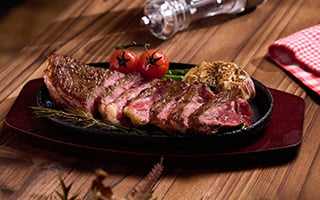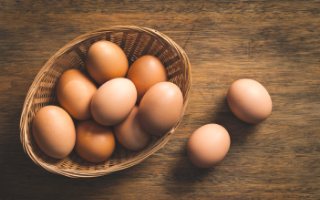Cheers with Sake ‧ Style of Sake

The Five Styles of Sake
The various types of sake, like Daiginjo, Junmai Ginjo and Junmai, are all made from the same simple ingredients; the vastly different styles are the result of the efforts made by sake breweries and master brewers, each creating their signature sakes with distinct flavours, mouthfeel and aromas, suiting diverse tastes and types of food.
Let’s get to know the characteristics of the five styles of sake.
Light & Dry
Dry, Soft & Mild
Considered a revolutionary taste experience in the mid-1980s, light and dry sake was born due to a change in people’s working lives and lifestyles. The mainstream taste back then was to add sweetness to the sake, but the new light and dry style gained popularity and has become one of the major sake styles.
Light (“tanrei” in Japanese) signifies low acidity, and the taste tends to be soft and mellow. Dry (“karakuchi” in Japanese) dose not imply spicy, but crisp and not sweet. It’s similar to a “soft-featured gentleman”, as the common Japanese categorisation has it, who has a calm, understated character but leaves a lasting impression.
Sometimes, you can refer to the Sake Meter Value on the label to have an idea of the sweetness of the sake: a reading with a negative sign “-” indicates sweetness, usually getting sweeter when the negative number grows larger. Dryness is indicated with a positive sign “+”, which also becomes more pronounced as the number rises. The value of most sakes is between –3 and +3. If it reaches +10 or above, expect a very dry sake style.
The body of light and dry sake is gentle and mild with a balanced and restrained taste. It will not overpower the taste of food and can bring out the umami of ingredients when paired with sashimi, sushi, raw oysters, salty dishes and Shuto cheese.
Light and dry sakes are the signature style of Niigata Prefecture. They’re made using “Gohyakumangoku” sake-brewing rice from the country of snow, which yields early in its development and brews light, dry crisp sake.
Hakkaisan Daiginjo
- Made with spring water from Hakkaisan, featuring a smooth, delicate taste with a mild, elegant aroma
Serving Temperature
 On the Rocks
On the Rocks Chilled
Chilled Room Temp
Room Temp Warm
Warm Hot
HotNose
 Grain & Cereal
Grain & Cereal Floral & Fruity
Floral & Fruity Tropical Fruit
Tropical FruitNose Intensity
Palate
Aftertaste
Juicy & Clean
Refreshing, Delicate & Well-balanced
This style of sake features a well-balanced fruity aroma and umami, with a mild scent and a lightly alcoholic feel. The mouthfeel is refreshing and crisp with a mid-level acidity, similar to a bright, energetic student with an easy-going character.
The acidity level in sake does not simply refer to the sourness, as with citric acid; instead, it refers to the various acids contained in sake, like succinic acid, lactic acid and malic acid.
The different styles of acid will also affect the taste and the mouthfeel; for example, sake made with Kimoto technology and Yamahai yeast features a smooth mouthfeel with a significant lactic acid presence. In recent years, many sake breweries have used “white koji” to brew refreshing, clean white wine-like sake, giving customers a more diverse taste experience.
Shichida 13 Junmai Ginjo
- A flavour that balances umami and a refreshing quality, with a fruity nose reminiscent of pear and cantaloupe
- A firm structure and delicate mouthfeel; the fruity aroma and umami are well balanced
Serving Temperature
 On the Rocks
On the Rocks Chilled
Chilled Room Temp
Room Temp Warm
Warm Hot
HotNose
 Grain & Cereal
Grain & Cereal Floral & Fruity
Floral & Fruity Tropical Fruit
Tropical FruitNose Intensity
Palate
Aftertaste
Fruity & Fresh
Fruity, Floral & Delicate
This style of sake features a floral, fruity aroma which feels like a romantic young lady holding a beautiful bouquet. The mouthfeel is sweet and light with an intense, elegant aroma, a.k.a. Ginjo Aroma, quite the opposite of the light, dry sake style with its mild, stable aroma.
Ginjo and Daiginjo mainly have fruity and floral aromas, known as “Ginjoka”. A low rice polishing ratio and a high technical standard are required to brew this kind of aromatic sake: the more the rice is polished, the more impurities are removed, leaving a refined, clear sake with a substantial aroma, which needs long brewing time.
This style of sake is sweet and light – highly recommended for those who are new to sake. It’s perfect for pairing with light appetisers or dishes seasoned with vinegar or sour dressing, making the fruity aroma stand out.
Dassai 39 Junmai Daiginjo
- Made with Yamada Nishiki – the “king of sake rice" at a polishing ratio of 39%; bursting with a fruity aroma
- A well-balanced sake with a silky-smooth mouth and a slightly sweet finish
Serving Temperature
 On the Rocks
On the Rocks Chilled
Chilled Room Temp
Room Temp Warm
Warm Hot
HotNose
 Grain & Cereal
Grain & Cereal Floral & Fruity
Floral & Fruity Tropical Fruit
Tropical FruitNose Intensity
Palate
Aftertaste
Fragrant & Elegant
Silky, Sweet & Mellow
One of the main characteristics of this fragrant, elegant style of sake is its strong, lingering fruity scent with a smooth, sweet mouthfeel, similar to an intellectual lady who is beautiful and smart.
Compared to a refreshing sake, the body of this kind of sake is fuller, with a mid-level richness and a silky-smooth mouthfeel. Even when not paired with food, it’s perfect for the pure enjoyment of its aroma, silky mouthfeel and delicate taste. It also pairs well with steamed seafood or tempura. The sweetness of the sake brings out the umami of the ingredients, enhancing the flavours of both with a lingering finish.
Born Wing of Japan Junmai Daiginjo
- International award-winning sake that is served on Japanese government aircraft
- Made from Yamada Nishiki rice with a mix of two polishing ratios
- Aromatic with a hint of umami, and features a full mouthfeel with a delicate flavour. It pairs well with Japanese uni pasta
Serving Temperature
 On the Rocks
On the Rocks Chilled
Chilled Room Temp
Room Temp Warm
Warm Hot
HotNose
 Grain & Cereal
Grain & Cereal Floral & Fruity
Floral & Fruity Tropical Fruit
Tropical FruitNose Intensity
Palate
Aftertaste
Rich & Umami
Savoury, Complex & Full-bodied
This style of sake is like a mature, sophisticated gentleman. Just a tiny sip of the intriguing, full-bodied sake gives a mouthful featuring a complex layering of umami aroma, richness, sweetness and bitterness.
A fruity, aromatic sake is like a pop song with a catchy melody, while a rich, complex, savoury sake is like a sophisticated piece of classical music.
This style of sake is well suited for ageing and is best served at room temperature or warmed. Excellent for pairing with strong-flavoured food like nabe, deep-fried food, grilled dishes and even Chinese cuisine. The umami of the sake and the food enhance one another and mellow out the intense richness of both.
Izumibashi Black Tombo Kimoto Junmai
- Made with own homegrown Yamada Nishiki Rice and traditional Kimoto yeast
- Aged for more than two years, with a rich umami and a round, smooth mouthfeel
- The robust rice flavour stands out when served warm
Serving Temperature
 On the Rocks
On the Rocks Chilled
Chilled Room Temp
Room Temp Warm
Warm Hot
HotNose
 Grain & Cereal
Grain & Cereal Floral & Fruity
Floral & Fruity Tropical Fruit
Tropical FruitNose Intensity
Palate
Aftertaste


















































